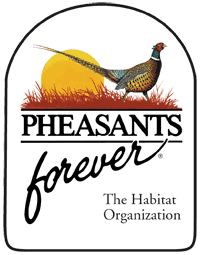Pheasants Forever Earns Grant to Teach Minnesota Youth about Birds & Bees
Pheasants Forever 06.16.14

Community projects will educate public about value of pollinators in food web for humans & pheasants
Minnesota’s Environment and Natural Resources Trust Fund recently awarded Pheasants Forever with a $100,000 grant for the creation of the Minnesota Pollinator Partnership. Through this new initiative, Pheasants Forever will host 40 community events throughout the state to educate youth and their families about the value of pollinators to humans and pheasants through interactive habitat projects.
Approximately one-third of all food consumed by humans is delivered by pollinators; including fruits, vegetables, nuts and coffee. Habitat necessary for rapidly declining populations of honey bees and monarch butterflies is also the very same diverse grassland and prairie flower habitat necessary for pheasants. Likewise, the insects produced in this habitat are the primary food source for pheasant chicks during their first months of life.
“Habitat is the nexus between birds and bees,” explains Drew Larsen, Pheasants Forever’s national habitat education specialist and the grant writer. “The massive decline in honey bee populations and monarch butterflies have the same root cause as our tumble in pheasant numbers; a loss of quality habitat featuring a diverse mix of flowering plants and grasses.”
Through Pheasants Forever’s Minnesota Pollinator Partnership, the group plans to work on 40 community projects throughout the state. In order to accomplish these objectives, grants up to $2,500 per project will be made available to local Pheasants Forever chapters and/or partners who meet the following criteria:
- Chapters/partners must engage a youth and/or community group in the establishment, maintenance, and monitoring of a pollinator habitat project (i.e. classrooms, 4H, Boy Scouts, Girl Scouts, FFA, etc.).
- Pollinator projects must meet minimum pollinator habitat specifications set by the U.S. Department of Agriculture:
- Pollinator projects must be a minimum of 1/2 acre in size:
- If planted in a strip, strip must be a minimum of 20 ft. wide
- Pollinator seed mix must include a minimum of 9 native wildflower species (we expect to greatly exceed the minimum)
- At least 3 species shall have their primary onset of blooming during each period of April-June 15, June 15-July, and August-October
- Chapters/partners must provide a dollar-to-dollar match in order to receive grant funding for their projects. Match would include cash match from chapters and partners as well as in-kind match from donations and volunteer time spent establishing, maintaining and monitoring projects.
Chapters or partners interested in learning more about participating in Pheasants Forever’s new Minnesota Pollinator Partnership should contact Drew Larsen at (308)293-1194 or via email.

